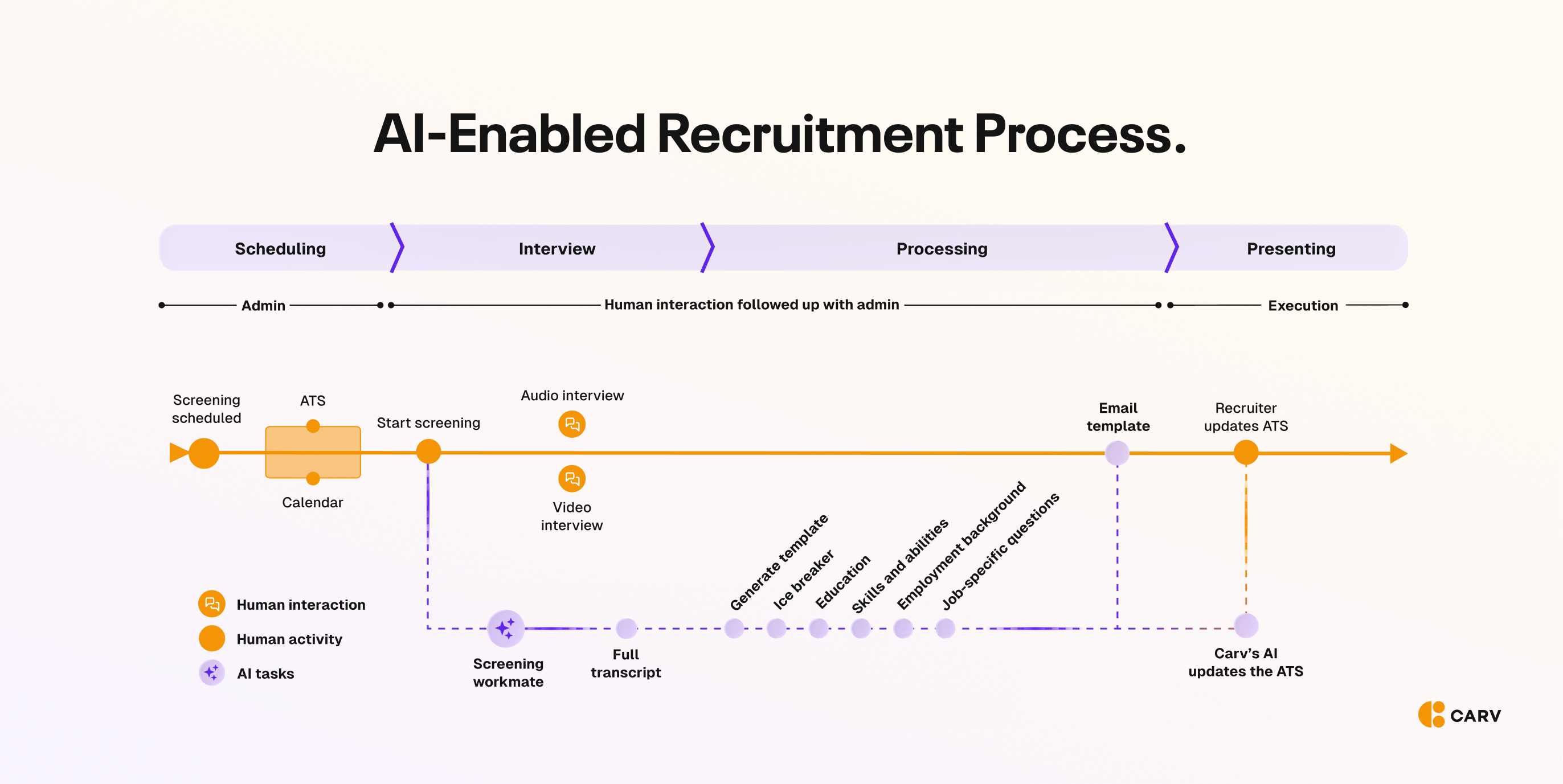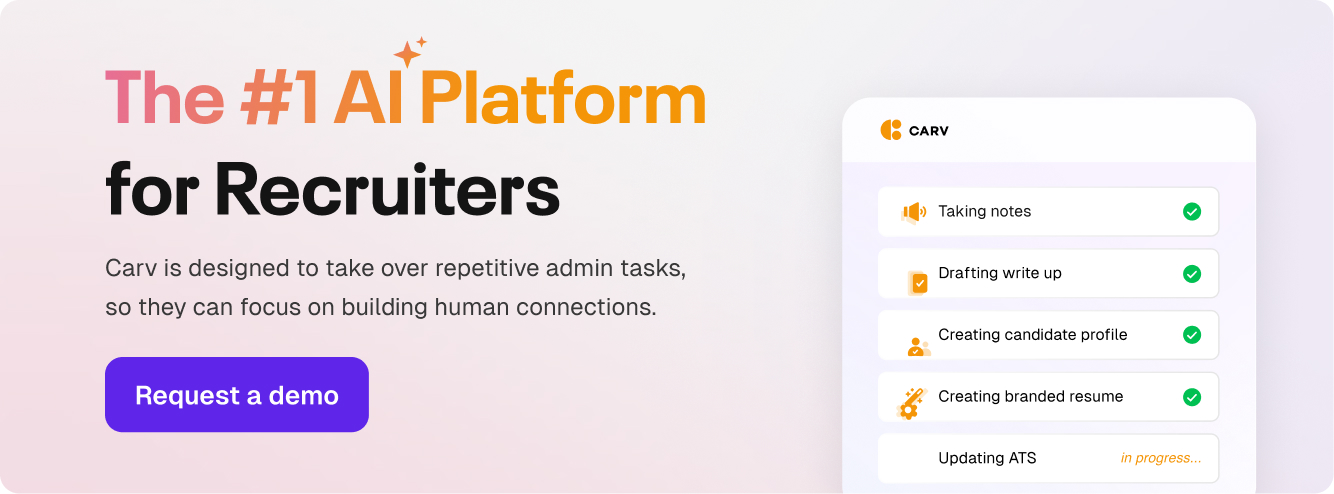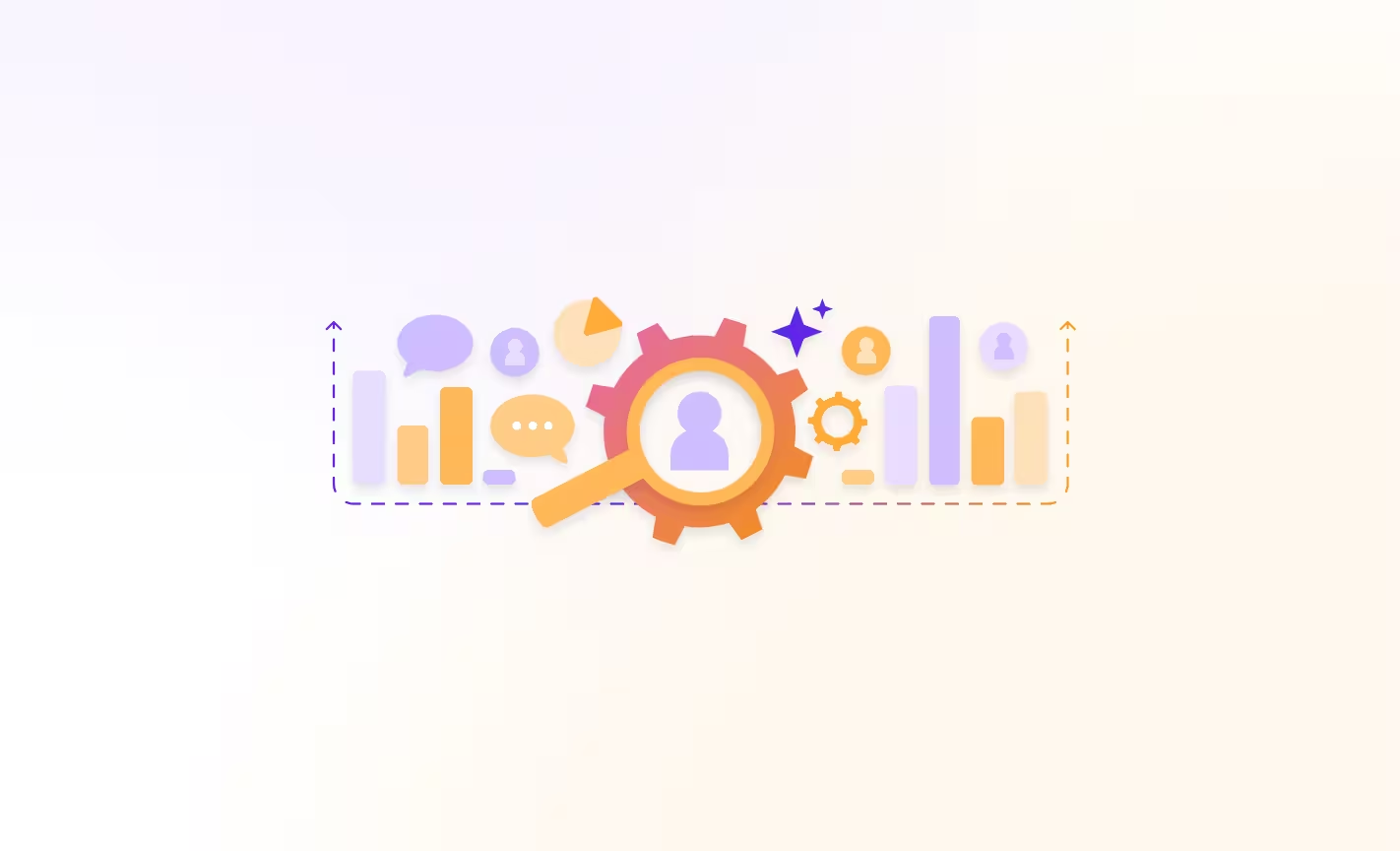Corporate hiring is running on outdated infrastructure, characterized by fragmented systems, manual processes, and excessive administrative tasks.
The solution shouldn't be more tools, but smarter orchestration. AI has moved beyond merely screening resumes, and it's rebuilding how hiring teams operate.
Let’s discuss five underused ways AI can make your corporate hiring faster, smarter, and smoother, without losing the human touch.
1. Enhanced job matching
Forget basic keyword matching when doing candidate discovery. That's yesterday's tech, and it could be why you're overlooking great candidates.
Agentic AI doesn’t just scan for keywords. It looks at all the candidates in your talent pool, and takes into account all your previous interactions to understand the full story behind a candidate’s background. Think of it as finding the why behind the resume, not just the what.
It can identify:
- Project outcomes that reveal real, proven skill sets.
- Career trajectories that predict future performance.
- Transferable experiences from other industries.
- Soft-skill indicators hidden in work history.
Carv utilizes context-rich models that extend beyond skill tags to help recruiters find the ideal fit for every role.
Our LLM-powered platform can identify applicant intent, adaptability, and even their career trajectory. These features are invaluable when it comes to contextual matching and AI talent rediscovery, and are driven by multi-model orchestration and advanced learning loops.
Real-world impact
Your tech company is struggling to fill enterprise sales roles. Traditional searches keep surfacing the same SaaS candidates everyone’s chasing, and the process is getting time-consuming.
AI, however, can look at your talent pool and spot profiles with a history in medical devices or industrial sales – industries with long sales cycles, complex stakeholder management, and a knack for navigating regulated markets.
They’re qualified, available, and thinking differently. That’s the power of intelligent matching.
Implementation tips
- Make sure your talent pool is up-to-date and use AI agents to regularly engage candidates and keep them warm.
- Feed your AI system data from your top performers' backgrounds to train it on what success actually looks like.
- Don't just rely on job descriptions – include actual day-to-day responsibilities and challenges when asking AI to source for you.
- Use AI algorithm suggestions as a starting point to surface matches, but maintain human oversight for final decisions.
2. Automating routine tasks with AI
Your recruiters didn't sign up to be calendar coordinators, yet many are bogged down with admin tasks.
Zero-Admin AI can resolve this issue, giving your recruiters more time back in their days by taking over the mind-numbing, repetitive tasks dominating their hours, including:
- Interview scheduling that syncs across multiple calendars without the email ping-pong.
- Follow-up sequences that keep candidates warm while recruiters focus on high-value conversations.
- Reference checks that run automatically once candidates hit certain pipeline stages.
- Document collection that happens without anyone chasing paperwork.
The compound effect
Let's say your retail company has 10 recruiters, each handling 15 requisitions. They're overwhelmed with query follow-up workflows and rescheduling interviews, and time-to-fill is creeping past 45 days.
If you implemented AI tools for admin automation, here's what could happen:
- Recruiters could handle 20-25 reqs each without burning out.
- Time-to-fill could drop just from faster coordination and better decision-making.
- Candidate satisfaction could improve from the instant responses.
- Your cost-per-hire could decrease significantly from improved efficiency.
The math is simple: Every hour saved on admin is an hour spent finding and closing top talent. But the real win? Your recruiters actually enjoy their jobs again.

3. Improved candidate scoring systems
Traditional scoring systems rely on rigid criteria that overlook important context and perpetuate the same hiring decision patterns that may have caused you to miss top talent to begin with.
AI-powered scoring evaluates candidate profiles holistically, weighing hundreds of data points to predict actual job performance. Primary evaluation factors during the recruitment process include:
- Performance patterns of similar candidates in comparable roles.
- Cultural fit indicators based on communication style and work preferences.
- Growth trajectory based on skill acquisition speed.
While the above factors are essential, the most powerful AI scoring tools also account for more hidden evaluation criteria, such as:
- How quickly candidates master new technologies (based on career history).
- Leadership potential (even in individual contributor roles).
- Remote work compatibility.
Reducing bias while improving candidate quality
While there have been concerns about AI’s bias, the reality is that hiring managers often also have significant unconscious bias that can impact their recruiting decisions. They may overlook candidates with great experience just because another has a degree from an impressive school, for example.
Intentional AI scoring helps reduce unconscious bias by focusing on outcomes rather than pedigree. No more automatically ranking Ivy League grads higher or dismissing candidates with employment gaps without looking at the full picture.
Consider this scenario: Your consulting firm traditionally favors candidates from top-tier schools and specific consulting backgrounds. However, this approach continues to produce similar hires with similar blind spots.
An AI scoring system could help by:
- Evaluating candidates based on problem-solving abilities shown across any educational background.
- Recognizing non-traditional paths that demonstrate resilience and adaptability.
- Identifying candidates with employment gaps who maintained skills through freelance work or certifications.
- Scoring based on actual competencies rather than prestige markers.
For example, Carv’s LLM-powered scoring engine combines structured performance data with conversational insights. Our engine draws from candidate interviews, recruiter notes, and historical outcomes to predict success and reduce bias.
This approach could help you build more diverse, innovative teams while actually improving performance outcomes.

4. Real-time talent pool analysis
Most companies treat their talent acquisition pipeline like a static database. AI treats it as the dynamic ecosystem that it is, requiring constant optimization and assessment. This is critical for candidate rediscovery and getting better insight into your pipeline.
Real-time talent pool analysis will track critical pipeline metrics such as:
- Skill availability trends.
- Candidate engagement levels to determine who is active and who is passive.
- Drop-off points and reasons.
- Source quality scores are updated daily.
- Competitive pressure indicators, including how many other companies are pursuing your candidates.
Turning data into action
Carv’s real-time analytics turn static ATS data into a living intelligence layer, detecting drop-offs, recalibrating sourcing mix, and forecasting fill rates before vacancies become bottlenecks.
This means hiring teams can anticipate gaps and adjust their strategy instead of reacting after losing weeks to unfilled roles.
Imagine you're a financial services firm trying to hire cloud architects in a competitive market. Your roles keep going unfilled for months. Here's how real-time AI analysis could help:
- Alert you that available cloud architects in your pipeline dropped 30% this month.
- Identify that you have a surplus of DevOps engineers with cloud experience.
- Show that your compensation ranks 4th among competing offers.
- Reveal that 40% of candidates drop off after your technical assessment.
With these insights, hiring teams could:
- Expand requirements to include those with DevOps backgrounds.
- Adjust compensation to be more competitive.
- Streamline your technical assessment to reduce drop-off.
- Pivot your sourcing strategy before the shortage becomes critical.
5. Enhanced candidate experience through AI-driven interactions
Ghosting works both ways. Just as candidates disappear on you, your slow response times and generic communications are driving top talent straight to competitors.
AI-driven interactions solve this by delivering the responsive, personalized experience candidates expect:
- 24/7 agents that answer questions instantly, even at 2 AM when that perfect candidate is researching your company.
- Personalized messaging that references specific skills and interests from their application.
- Real-time updates on application status so candidates never wonder where they stand.
- Intelligent FAQs that evolve based on what candidates actually ask.
Carv’s conversational AI engages candidates in their language, on their time – across channels – while syncing updates back to your ATS automatically.
In practice, that means no ghosting, no missed updates, and a candidate experience that feels human, even at enterprise scale.
The impact? Companies using AI-driven candidate engagement see application completion rates jump significantly. When Carrefour implemented Carv’s Conversational AI, for example, it not only reduced time to hire by 50%, but they saw a 15% increase in candidate satisfaction scores.
When candidates feel valued from the first interaction, they're more likely to accept your offer, allowing you to secure top talent even when they’re in demand.
Turn overlooked features into competitive advantages
The AI recruiting and hiring features we’ve discussed in this article aren't futuristic capabilities. They're available right now, and your competitors are likely already testing them.
The companies winning the talent war aren't just using AI to screen resumes faster. They're leveraging these overlooked features to build hiring machines that move quickly, reduce bias, and create superior candidate experiences.
Every day you wait, you’re risking:
- Lost productivity from unfilled roles.
- Top candidates slipping through outdated filters.
- Recruiters burning out on tasks that machines should handle.
- Competitors are snatching up the talent you need.
The question isn't whether to adopt AI in your hiring process – it's whether you'll do it before your talent pipeline runs dry.
Carv brings together all five of these AI capabilities in one platform – handling the inefficiencies so your team can focus on what actually drives hires:
- Match beyond keywords with AI that spots transferable skills and non-obvious qualifications
- Eliminate admin overload with automated scheduling, ATS updates, and interview coordination
- Score candidates holistically using hundreds of data points, not just resume keywords
- Analyze your talent pool in real-time to spot trends and adapt before roles go unfilled
- Engage candidates 24/7 with conversational AI that actually sounds human
Don't let your competitors keep snatching the talent that should be yours. Request a demo with Carv today.



.avif)



